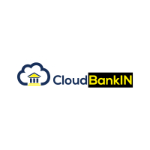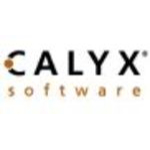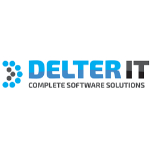List of Best Loan Management Software
Showing 10 of 115 productsCloudBankIN is a financial management software designed to simplify and streamline all your banking needs. With its user-friendly interface features, CloudBankIN is the perfect solution for individuals and businesses looking to manage their finances...Read CloudBankIN Reviews
Loan Servicing Soft, a revolutionary software designed to streamline and simplify loan management processes. With its user-friendly interface features, Loan Servicing Soft helps financial institutions and businesses of all sizes efficiently manage th...Read LOAN SERVICING SOFT Reviews
Calyx Software is a dynamic and innovative solution for managing every aspect of your business. With its advanced technology and user-friendly interface, Calyx Software streamlines processes and increases efficiency, allowing you to focus on what tru...Read Calyx Software Reviews
WEBFIN is an innovative and user-friendly accounting software designed to simplify financial management for businesses of all sizes. With its intuitive interface features, WEBFIN ensures efficient handling of all your financial tasks, making it an es...Read WEBFIN Reviews
FINSTA is a solution for your financial needs. This innovative software provides a seamless experience, helping you manage your finances with ease. Say goodbye to complicated spreadsheets and let FINSTA do the work for you. With its user-friendly int...Read FINSTA Reviews
LoanPro is a loan servicing software that streamlines the complex processes of lending for financial institutions of all sizes. With user-friendly features and customizable options, LoanPro simplifies loan management, reduces costs, and increases eff...Read LoanPro Reviews
TurnKey Lender is a top-rated loan management software that has revolutionized the lending industry with its intuitive design features. With a focus on streamlining and automating loan processes, TurnKey Lender has become a go-to solution for financi...Read TurnKey Lender Reviews
Loan Office is a software designed to streamline the loan process for lenders and borrowers alike. With its user-friendly interface and innovative features, it simplifies loan management, increases efficiency, and improves accuracy. The Loan Office i...Read The Loan Office Reviews
AXCESS is a software solution designed to enhance your workflow and boost productivity. With its user-friendly interface features, AXCESS revolutionizes the way you manage your tasks, projects, and collaborations. Say goodbye to inefficient methods a...Read AXCESS Reviews
Margill Loan Manager is an innovative software designed to streamline and manage loans seamlessly. With its user-friendly interface features, Margill Loan Manager simplifies the loan process and helps you stay on top of all your loan activities. Say...Read Margill Loan Manager Reviews
- What Is Loan Management Software?
- Top Reasons Why Businesses Need Loan Management Software?
- What Are the Top Key Features of Loan Management Software?
- What Are the Top Benefits of Loan Management Software?
- What Are the Steps to Choose the Right Loan Management Software?
- What Are the Types of Loan Management Software for Different Industries?
- What Are the Technology Trends for Best Loan Management Software?
- What Are the Deployment Options for Loan Management Software?
What Is Loan Management Software?
Loan management software refers to a computerized application specifically developed to oversee the complete loan lifecycle, including all stages from initiation to conclusion. The system has the capability to monitor and trace loan applications, facilitate loan processing, oversee customer accounts, monitor payment transactions, and provide comprehensive reports.
The technology serves as an effective means for borrowers and lenders to efficiently oversee and monitor all facets of the loan procedure. Cloud based loan management software enables lenders to efficiently manage and optimize the entirety of the loan process. Customer accounts are established by inputting the customer's personal details, and their complete loan history is securely recorded within a database.
The software has the capability to manage payment processing for monthly payments, late fees, and prepayments. Reports can be prepared in order to offer valuable insights pertaining to historical loans, ongoing loans, and customer accounts. Lending management software can provide borrowers with the advantage of effectively managing their loan applications.
Users have the ability to submit all requisite documentation for loan approval, oversee the progress of their loan application, and keep track of their loan payments. Additionally, the software has the capability to send notifications as a means of reminding borrowers about the upcoming due dates for their payments.
In conclusion, an online loan management system serves as a valuable instrument for facilitating the management of loans by both lenders and borrowers. The implementation of this technology significantly reduces the need for manual labor in the processing of paperwork, simultaneously offering valuable insights on the performance of loans and customer accounts.
Top Reasons Why Businesses Need Loan Management Software?
1. The objective is to establish a centralized lending management software that facilitates the documentation, tracking, and management of the complete loan process. This will result in expedited processing times and enhanced customer service.
2. In order to guarantee adherence to all regulatory and compliance obligations.
3. In order to limit the occurrence of human errors during the process of inputting data.
4. In order to streamline and expedite repetitive operations, such as the processing of loan applications, the computation of interest, and the creation of amortization schedules, automation is employed.
5. In order to enhance the process of data analysis and facilitate informed decision-making pertaining to loan origination and the continuous administration of loans.
6. In order to facilitate a secure means of internet access for consumers to effectively manage their loan information.
7. In order to facilitate the prompt notification of impending loan repayments.
8. In order to accommodate various channels such as mobile, web, and retail platforms.
9. The purpose of this initiative is to oversee and record instances of loan losses and delinquencies.
10. The objective is to implement automation in client communications, specifically in the areas of account statements, payment alerts, and other pertinent notifications.
11. In order to produce reports such as portfolio or liquidity position analyses.
12. In order to enhance understanding of the customer's loan portfolio and its associated data, it is necessary to offer more comprehensive insights.
13. In order to establish compatibility with preexisting systems and procedures.
14. In order to produce automated notifications for any potentially suspicious behaviors.
15. In order to facilitate the seamless transfer of data to compliance systems and regulatory bodies.
What Are the Top Key Features of Loan Management Software?
The top key features of loan management software are as follows:
1. Automated Loan Processing: The utilization of this technology facilitates the effective processing of loans and contributes to the optimization of the entire loan lifecycle.
The system eliminates the need for manual operations, enabling users to conveniently submit loan applications, monitor file progress, do payment calculations, generate amortization tables, and provide comments on their progress.
2. Risk Management: The best loan management software plays a crucial role in the identification and management of risk through the utilization of historical data and predictive analytics. This aids lenders in enhancing their decision-making processes regarding loan applications and portfolios.
3. Document Management: The system enables the effective organization, monitoring, and administration of all loan-related documentation. The platform allows users to generate documents, submit revision requests, and monitor the progress of approval processes.
4. Loan Origination: The loan origination process is streamlined by the software through the automation of applications, data validation, and credit score calculations. This feature facilitates expedited assessment and authorization of loan requests by lenders.
5. Reporting and Analytics: Cloud based loan management software offers valuable insights into the historical, current, and prospective performance of loans. The platform empowers users to make informed decisions based on data analysis on their loan portfolios.
6. Customer Support: The lending management software offers a comprehensive solution for customer support services. This facilitates effective communication between lenders and customers, allowing for prompt resolution of inquiries and disputes.
7. Integration: Online loan management systems are specifically engineered to provide seamless integration with several other systems, including customer relationship management (CRM), accounting, and employment databases. This feature facilitates users in efficiently and precisely retrieving information.
What Are the Top Benefits of Loan Management Software?
The top benefits of loan management software are as follows:
1. Improved Efficiency: The best loan management system enhances the efficiency of the intricate loan origination and servicing procedure, leading to improved process efficacy. The implementation of automated workflows and configurable rules facilitates the automation of numerous manual operations, hence expediting the process of decision making.
2. Lower Cost: Cloud based loan management software is an effective tool that minimizes the amount of time dedicated to manual processes and decreases the expenses associated with processing paper-based documents.
This phenomenon contributes to the reduction of overall expenses, as it necessitates a lesser allocation of resources in the loan origination and servicing procedure.
3. Enhanced Risk Management: The utilization of lending management software facilitates the enhanced monitoring of various risks, including credit risk, compliance risk, liquidity risk, and other associated hazards.
Furthermore, the utilization of this technology can enhance the efficiency of loan portfolio management through the provision of essential data for thorough analysis and reporting purposes.
4. Improved Data Security: Cloud based loan management software offers an augmented level of protection to safeguard sensitive loan data and maintain its confidentiality. Additionally, the implementation of access control measures and audit trails serves to safeguard borrower data.
5. Greater Transparency: The best loan management system enables borrowers to electronically access their loan information. This feature enables individuals to access and analyze their loan information in real-time, thereby promoting enhanced transparency and fostering improved rapport with borrowers.
6. Enhanced Compliance: Loan management software plays a crucial role in maintaining regulatory compliance through its ability to automatically update and notify users of any necessary alerts. This enables firms to remain current with industry standards and decrease the amount of time spent on manual processes.
7. Scalability: Lending management software facilitates the expansion of loan origination and servicing operations for organizations through the provision of comprehensive automated procedures and workflows. Consequently, firms have the ability to swiftly expand their loan portfolios and effectively adapt to market fluctuations.
What Are the Steps to Choose the Right Loan Management Software?
1. Assess your organization's needs: Conduct an evaluation of the loan procedures inside your firm and ascertain the specific requirements for an online loan management system.
It is advisable to carefully evaluate your present and prospective requirements, while also proactively identifying potential domains that may necessitate heightened levels of automation or technological assistance in the future.
2. Evaluate loan management solutions: This study aims to conduct a comparative analysis of several lending management software in order to identify the most suitable options for meeting the specific requirements of a company.
When evaluating different options, it is important to take into account various criteria, including cost, scalability, and convenience of use.
3. Research potential vendors: It is imperative to conduct a thorough due diligence process on every vendor under consideration. An analysis should be conducted on the background of the company, client reviews, as well as the comprehensive features and capabilities of their software solutions.
4. Ask for demonstrations: Request for demonstrations of the best loan management system in order to enhance the evaluation process of each respective system. The primary objective is to examine the capacity of each system to fulfill one's present and future requirements.
5. Exercise caution when signing contracts: Prior to affixing your signature to any contractual agreements, it is vital to meticulously examine the terms and circumstances with utmost scrutiny, aiming to ascertain that they align harmoniously with the optimal welfare of your firm.
6. Train your staff: It is imperative to provide comprehensive training to all staff members regarding the best loan management system, in order to ensure their proficient and secure utilization of the system.
What Are the Types of Loan Management Software for Different Industries?
A wide array of the best loan management software solutions cater to various businesses, encompassing banking, finance, and mortgage loan sectors.
1. Banking loan management software: The banking loan management system facilitates several aspects of loan operations for banks, including loan origination, account management, risk evaluation, servicing, dashboard reporting, and other related functionalities.
This technology aids in optimizing the full loan lifecycle, encompassing the stages of loan initiation through to repayment.
2. Finance loan management software: Finance loan management software is a technological tool utilized for the purpose of effectively managing both consumer and company loans.
The primary objective of this system is to enhance lending procedures by granting users the ability to get borrower information, evaluate credit records, oversee debt recovery, and monitor loan repayments.
3. Mortgage loan management software: Mortgage loan administration software streamlines the procedures involved in handling mortgage applications, overseeing loan products, and monitoring mortgage payments.
Additionally, an online loan management system enables lenders to monitor the appraisal and escrow procedures, as well as generate data related to loan servicing.
4. Specialized loan management software: Specialized loan management software is purposefully developed to cater to certain businesses or distinct loan categories, such as student loans or construction loans.
These technologies enable lenders to effectively monitor and oversee distinct loan procedures associated with these specific loan categories.
What Are the Technology Trends for Best Loan Management Software?
The technology trends for the best loan management software are:
1. Automation: Automation technologies encompass the utilization of software and artificial intelligence (AI)-based systems to execute loan-related tasks with enhanced efficiency. Automated technologies play a pivotal role in expediting loan processing time and mitigating expenses.
2. Mobility: The significance of mobile loan management services has grown in tandem with the increasing number of individuals utilizing their mobile devices for loan applications.
Software vendors have created novel mobile solutions that facilitate electronic connectivity between lenders and borrowers, allowing them to check the status of loans and make payments.
3. Data Analytics: Due to recent advancements in the field of Big Data and analytics, loan providers have acquired the capability to capture and analyze substantial volumes of data. This has enabled them to obtain valuable insights pertaining to borrower behavior and risk profiles.
The aforementioned data can thereafter be utilized to make informed selections regarding the extension of a loan or the adjustment of an interest rate.
4. Cloud Computing: Numerous loan providers are increasingly adopting cloud computing solutions as a means to achieve cost savings and streamline administrative processes.
Cloud-based technologies provide lenders with the capability to securely store and retrieve loan data, effectively administer loan applications, and efficiently manage borrower accounts.
5. Blockchain: Blockchains are decentralized and cryptographically secured ledgers that offer a reliable and auditable framework for loan transactions.
The utilization of smart contracts enables loan processors to construct mutually agreed-upon agreements between lenders and borrowers, hence mitigating the requirement for extensive documentation in the loan realization process.
What Are the Deployment Options for Loan Management Software?
The available deployment choices for loan management software encompass on-premise implementation, cloud-based deployment, and Software as a Service (SaaS) deployment.
1. The process of on-premise deployment entails the installation of software on a company's physical infrastructure, often located at the customer's designated site. This grants comprehensive authority over the software and its various components, including software upgrades.
However, it might pose challenges in terms of maintenance, security, and necessitates more hardware resources.
2. Cloud-based deployment refers to the practice of hosting software on a distant server, thereby enabling clients to access the software from a remote location. This approach offers enhanced scalability and flexibility, alongside improved data security, while simultaneously enabling complete software management.
3. The deployment of SaaS (Software-as-a-Service) entails the utilization of a third-party provider who hosts the application in a cloud environment and offers access to clients through a model based on subscription.
This approach offers enhanced adaptability and expandability, while also enabling a more economical ownership compared to the deployment options of on-premise or cloud-based systems.










